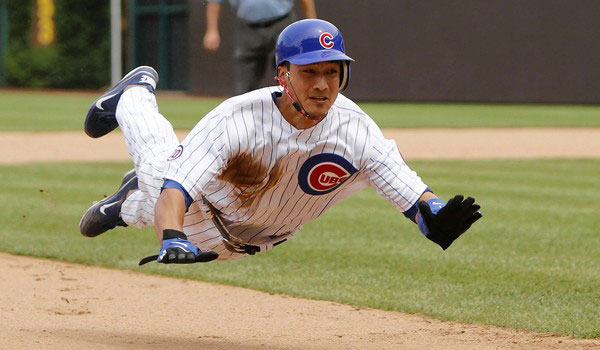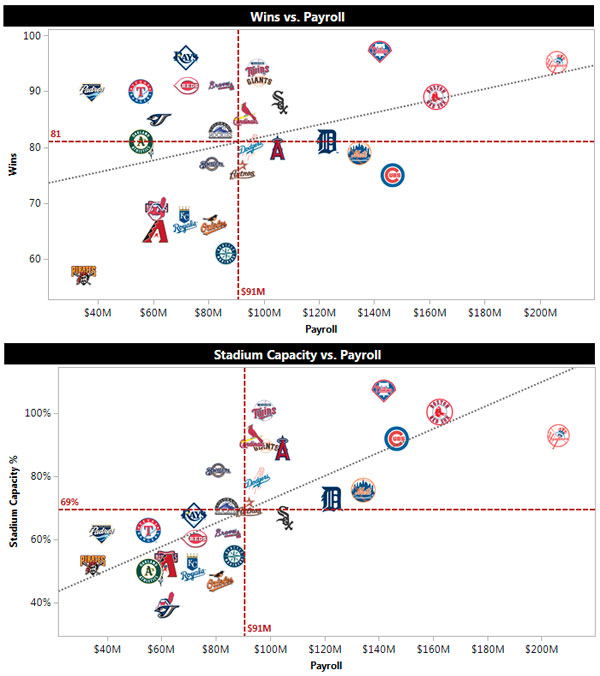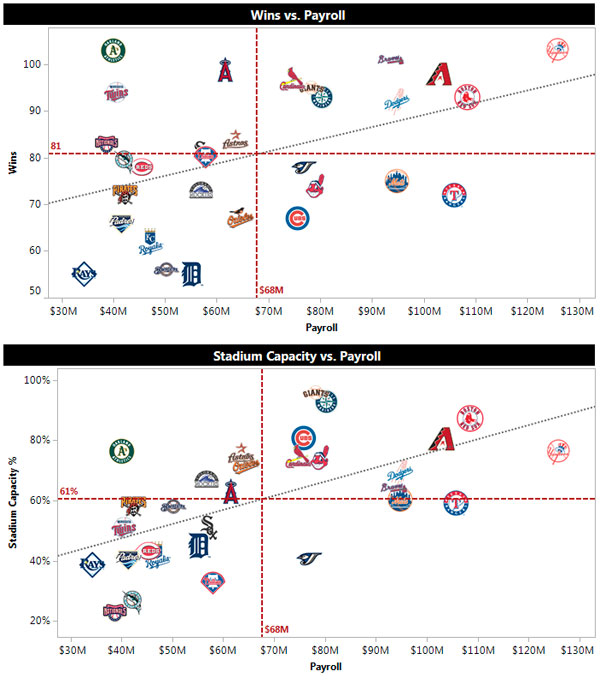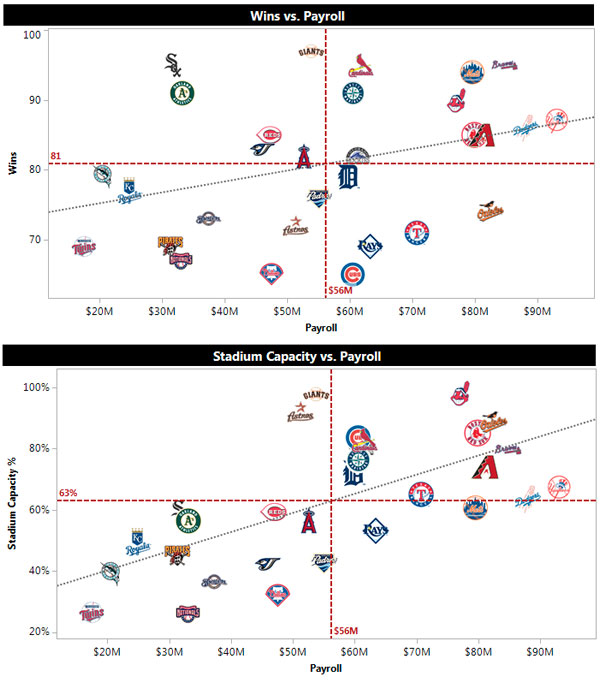
There has been much lamenting not just about the Cubs’ performance on the field this year, but also the franchise’s performance in the stands; announced attendance for a game dropped below 27,000 for the first time since 2002, and obviously actual attendance is often considerably lower.
And? It’s about time.
I was directed towards an interesting sports-data visualization contest the other day, and the winner charted payroll versus wins and payroll versus attendance by stadium capacity. I know this is a point I’ve made before, but the Cubs have been a victory-recession-proof business.
Here’s last year; you can see how the Cubs underperformed in wins versus payroll, and overperformed in attendance versus payroll, if only just barely:

Here’s 2002:

And 2000, when the Cubs lost 97 games, their worst season since 1980, and when they had a worse winning percentage than they do now (.401 versus .409):

What I like about this data visualization is how it suggests, depending on how you look at it, which teams are undervalued by their fans, and which teams are overvalued in comparison to other teams. Sometimes the Cubs are good; sometimes they’re not; sometimes attendance goes down, and sometimes it goes up… but they regularly outperform baseball as a whole.
Admittedly, the team on the field isn’t the only reason to go to a baseball game; even as a lifelong fan, it’s not the only reason I go. Wrigley is pleasant, intimate, a link to the game’s past—a big deal in the most nostalgic of major sports—easy to get to, and surrounded by stuff to do. And, as ESPN Chicago’s Jon Greenberg points out, the percentage of the team’s attendance attributable to tourism is surprisingly high.
Maybe it’s actually different this year. The 2000 Cubs had Sammy Sosa and a young Kerry Wood; the 2002 Cubs had Sosa, Wood, Mark Prior, and a 21-year-old Carlos Zambrano. This year’s team is just really boring. Their best hitters are all 33 years old or more, and two of them, Carlos Pena and Marlon Byrd, are essentially rentals. Their outfield, at least before Fukudome left, was an average of 34 years old. They didn’t do anything interesting at the trade deadline. Their high-level farm system lacks players putting pressure on the major-leaguers. They don’t even have any compelling failures (Adam Dunn, Alex Rios) to build a storyline around.
It’s possible to have a bad, interesting team. The Cubs are a bad, boring team.
They just seem to be killing time until they get their disastrous contracts off the books, perhaps to pick up Albert Pujols or Prince Fielder, and/or the some of the excellent pitchers who will likely come on the market the next year. Ted Cox put it well a couple days ago: "I felt like I was watching a bunch of bedraggled Little Leaguers anxious for their moms to pick them up and get them out of the sun."
Photograph: Chicago Tribune


